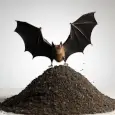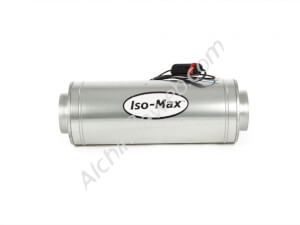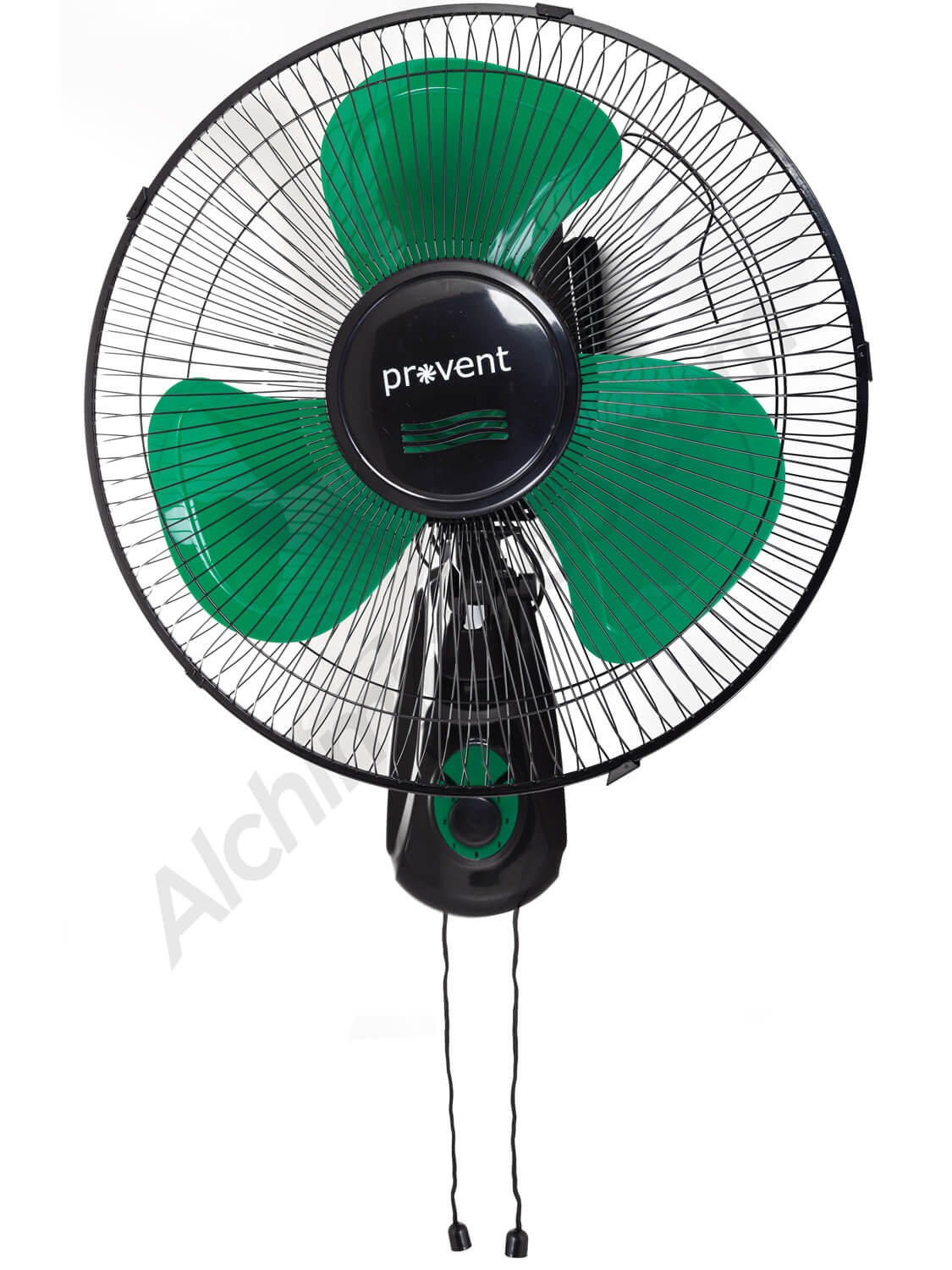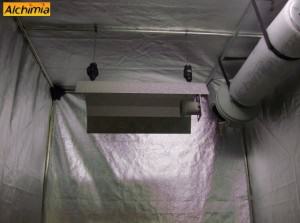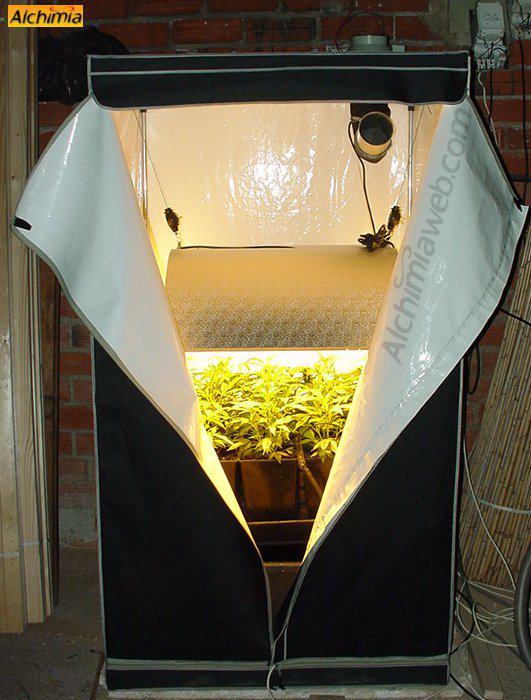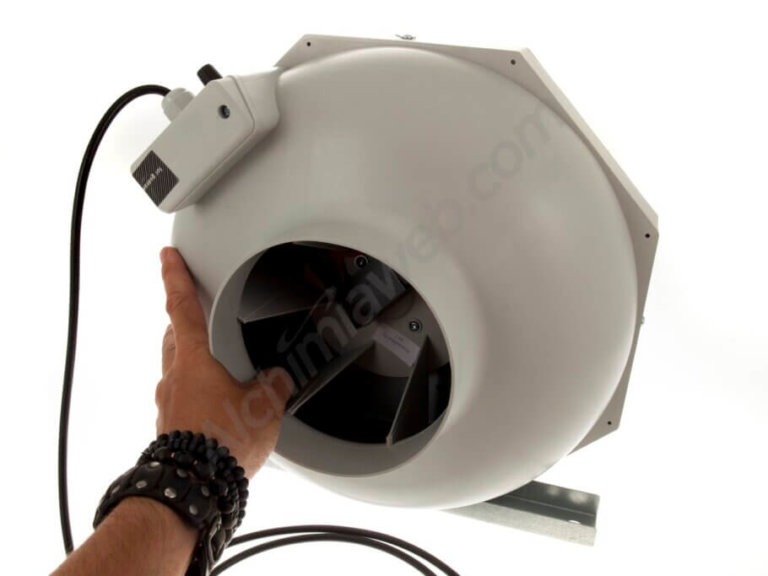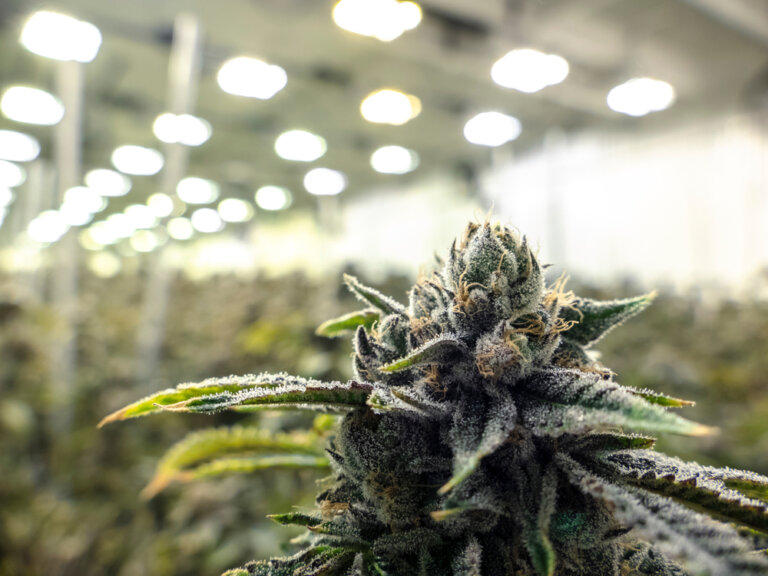Ventilation for marijuana grow rooms
List of contents
- How to correctly vent a cannabis indoor growing space?
- Which extractor fan do I need for my cannabis growing space?
- The air intake system of a cannabis grow room
- Using cool tubes in indoor growing tents
- Which fan should I use inside my growing space?
- The ventilation cycle of the growing tent
- How to reduce the noise generated by the ventilation system?
- How to prevent cannabis smell
How to correctly vent a cannabis indoor growing space?
Just like the lighting system or the nutrient solution, a correct ventilation is one of the most important parameters to take into account when growing marijuana indoors. A proper air ventilation allows the plants to perform all the needed gas exchanges, along with evacuating the heat produced by the lamps, achieving a better climate control and thus growing stronger plants.
The ventilation systems normally used are composed of, at least, two or three complementary elements: the air extractor, an interior fan that moves the air of the growing space and, in most cases, an intractor fan.
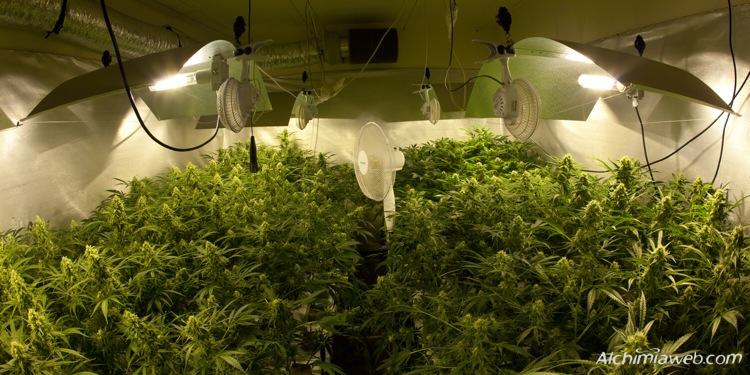
Which extractor fan do I need for my cannabis growing space?
The extractor fan is the key element of any air ventilation system, as it renews the air and regulates the climate of the growroom.
The needed extraction power depends on both the growing space and the lighting system used. The more light output we use, the more potent the extractor fan must be (this works also for the dimensions of our growing space). It's all about perfectly matching the operation of this devices.
There are several rules to calculate the power of the extractor in relation to the available space, but none of them takes into account all the different factors: light output used, volume of the growing space and outdoor temperature.

Which extractor do I need for my growing space?In this table you can see which extractor should be used according to the growing area and the lighting system.
It is important to distinguish between conventional inline extractors - that are actually fans with blades - and industrial fans (RVK, Can-Fan RS) which are industrial turbines much more efficient than the former. The difference in the airflow capacity (m3/h) between these two types of fans is huge!
In practice, inline fans should only be used when growing with energy-saving lamps and perhaps also as air intractors, as we'll see next.
If you are using HM or HPS bulbs, industrial extractors (RVK, Prima Klima) are highly recommended. This type of extractor also allows attaching carbon filters to remove indiscreet odors from the plants.
The air intake system of a cannabis grow room
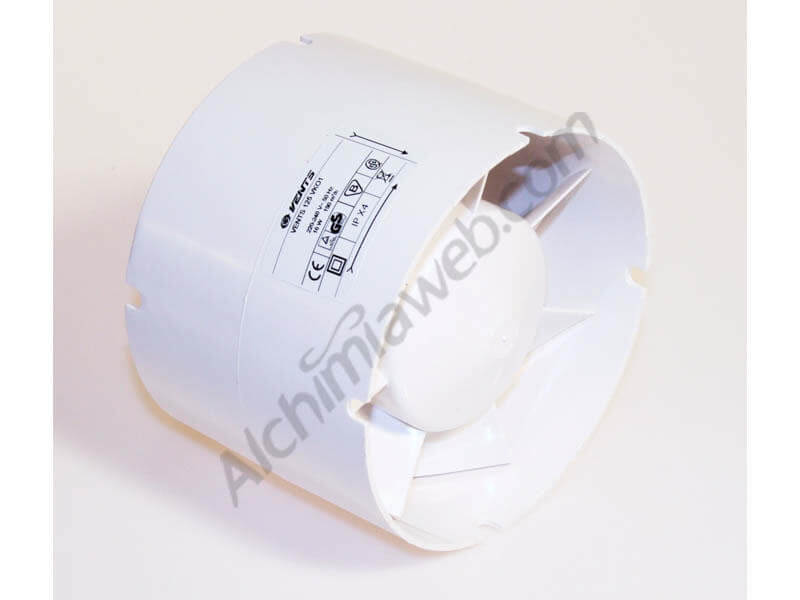
In smaller spaces, the intractor fan may not be necessary if we have a good extraction system (RVK, Prima Klima). Indeed, thanks to the effect of the pressure, the air will passively enter the growing tent through the holes on its sides (to avoid light from the outside entering inside the tent, just place a piece of bent air duct in the intake hole).
Of course, using an intake fan is recommended:
- To renew the plants' environment with fresh air from another room or the outside, improving the climate of our grow room.
- To limit the air pressure caused by the extractor, which tends to "vacuum" the walls of the growing tent, thus reducing the available space.
In all cases, the airflow capacity of the intake fan must always be lower than the extractor capacity, especially when using carbon filters (thanks to the pressure all the odorous air passes through the filter). Generally, a simple inline fan will work perfectly as air intake.
Using cool tubes in indoor growing tents
Cool tubes are very efficient devices to lower the temperature of the growing space. With this system, some of the heat produced by the bulb is evacuated by the extractor fan to the outside.
By contrast, cooltube reflectors have a major disadvantage regarding the light output, and should only be used in case of need (temperatures higher than 28 degrees celsius) since the yields are slighty lower with these devices.
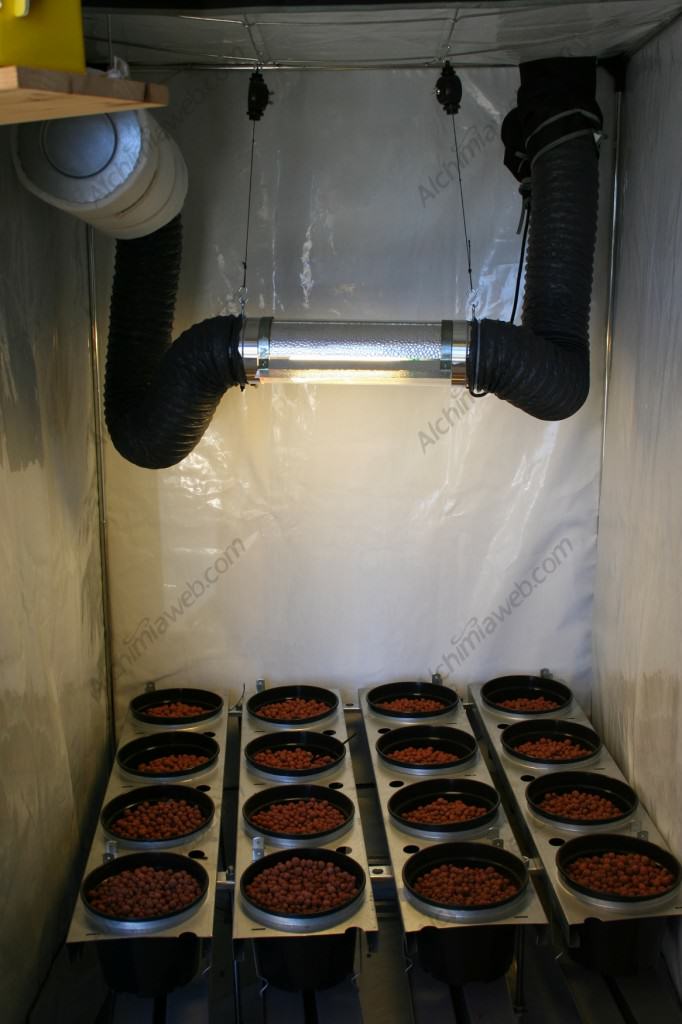
Indeed, the glass of the cool tube absorbs approximately 10% of the emitted light, even more, if it is not perfectly clean. This loss is even larger regarding the light that reflects on the reflector since it will have to pass three times through the glass before reaching the plants! Finally, the reflector attached to the cool tube is usually smaller than the classic ones.
Some growers think that cool tubes are more efficient since they allow them to place the bulbs much closer to the tops of their plants, but they shouldn't forget that the closer the bulb is to the plants, the smaller the area covered by the lamp. Placing them too close to the plants may cause only the plants directly below the bulb will benefit from it, while the others may receive less light.
Which fan should I use inside my growing space?
The interior fan is a complementary piece of the extractor fan. While it is not a very efficient tool to decrease the temperature, it prevents air stratification inside the growing tent.
The interior fan is important especially for the health of the plants, since it acts as the wind does outdoors and causes:
- Stronger branches and stems, that become more resistant and capable of supporting the weight of the buds at the end of the flowering stage.
- Better air renewal inside the growing space, enhancing gas exchange.
- Decreased relative humidity levels, with fewer diseases and pests.
The most common fans for growing tents are those usually used at home during summer. An oscillating fan with a grid is much more useful than a non- oscillating one, which blows in a single direction. Most growers use one oscillating fan for each square meter.
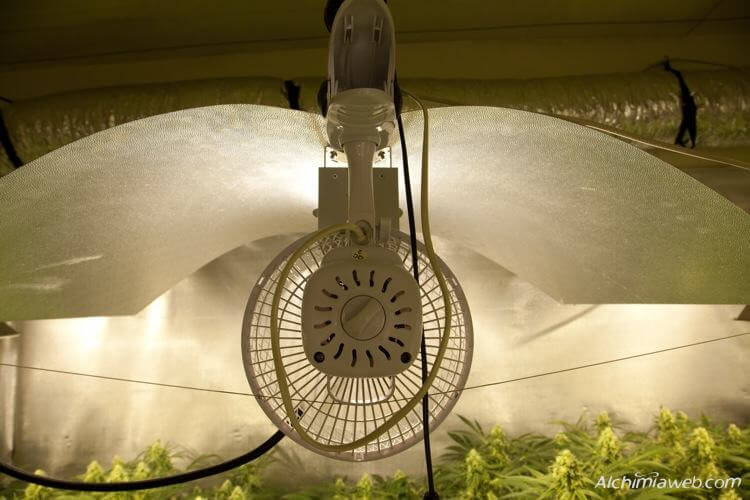
There are other interesting fans for indoor cannabis growing; some of them can be screwed to the wall, others may have a pedestal, etc. Honeywell offers a model which can be directed upwards or downwards, as well as a double-blade fan that can be used to ventilate two different growing spaces.
Another interesting option is using clip fans, which save space and are very practical. We can easily fix them to the growing tent bars, or place them among our plants.
Many growers use the excellent Adjust A Wings reflectors with these types of fans fixed right in front of the bulb, thus preventing the formation of hot spots under the lamps like a cool tube would do, but without any kind of light waste!
It is important to use the correct fan size in relation to the size of our plants. Direct ventilation on seedlings and young cuttings is not advisable, since it could de-hydrate the tender and fragile foliage. During the first 15 days of the life of the plant, we can either not use any interior fan or use it indirectly (blowing towards the bulb or a growing tent wall). Later on, as plants grow bigger, we will also need bigger fans to move the air of the growing space. One of the best options is using fans with speed control systems.
The ventilation cycle of the growing tent
When the lighting system of our grow room is on, every component of the air renewal system should be working with enough power to efficiently control the climate (26 degrees Celsius should be the highest temperature during this period).
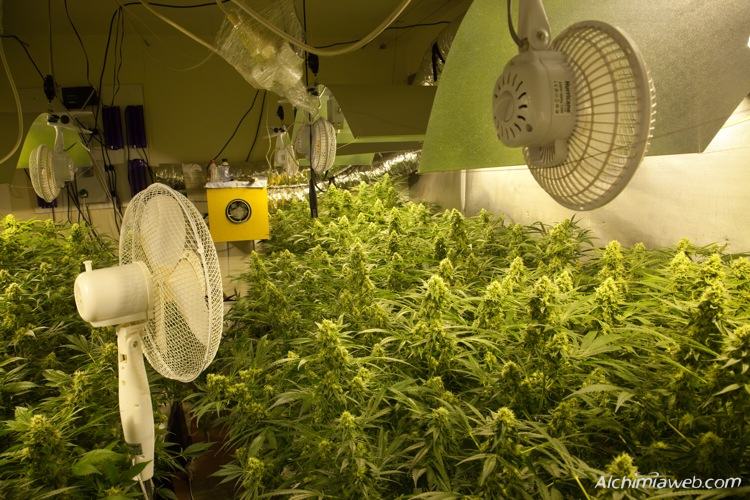
When the lamps are off and our plants have their night period, we can decrease the airflow since there won't be any need to reduce the temperature produced by the bulbs and the plants need less air renewal during this period. To do so, we can either reduce the power of the extractor fan using any kind of controller or use timers to reduce the operating time of the fans, for example using them for 15 minutes every hour.
Never stop the air extraction system completely for some hours, since plants always need a minimum air renewal to ensure a correct respiration.
The end of flowering is another crucial stage; decreasing the power of the air renewal system during this period will surely promote mold growth. During this stage, we recommend using all fans and extractors at full power, 24 hours a day.
How to reduce the noise generated by the ventilation system?
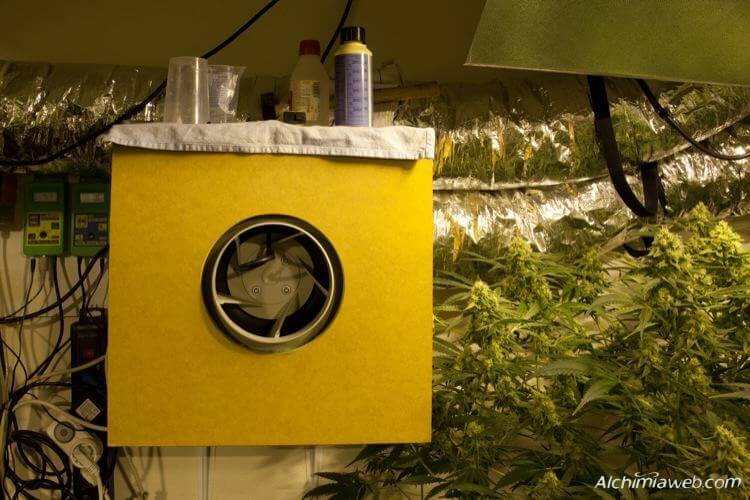
Sometimes, the noise produced by these systems may be an issue for certain growers. Luckily, there are several ways to reduce this noise quickly and effectively:
- Using soundproof air ducts in both the air intake and outtake.
- Using a controller with thermostat or GSE Evolution climate controllers.
- Isolating the RVK, Prima Klima... extractor fan wrapping it with any soundproof material.
- Ensamlbing a wooden/metallic soundproof case
- Using carbon filters lessens a bit the noise generated by the airflow.
How to prevent cannabis smell
The easiest and most efficient way to avoid the cannabis smell in indoor grow rooms is by using active carbon filters. These have to be attached to RVK or Prima Klima extractors (or any other fan of this kind), using either joints/clamps or aluminum adhesive tape.
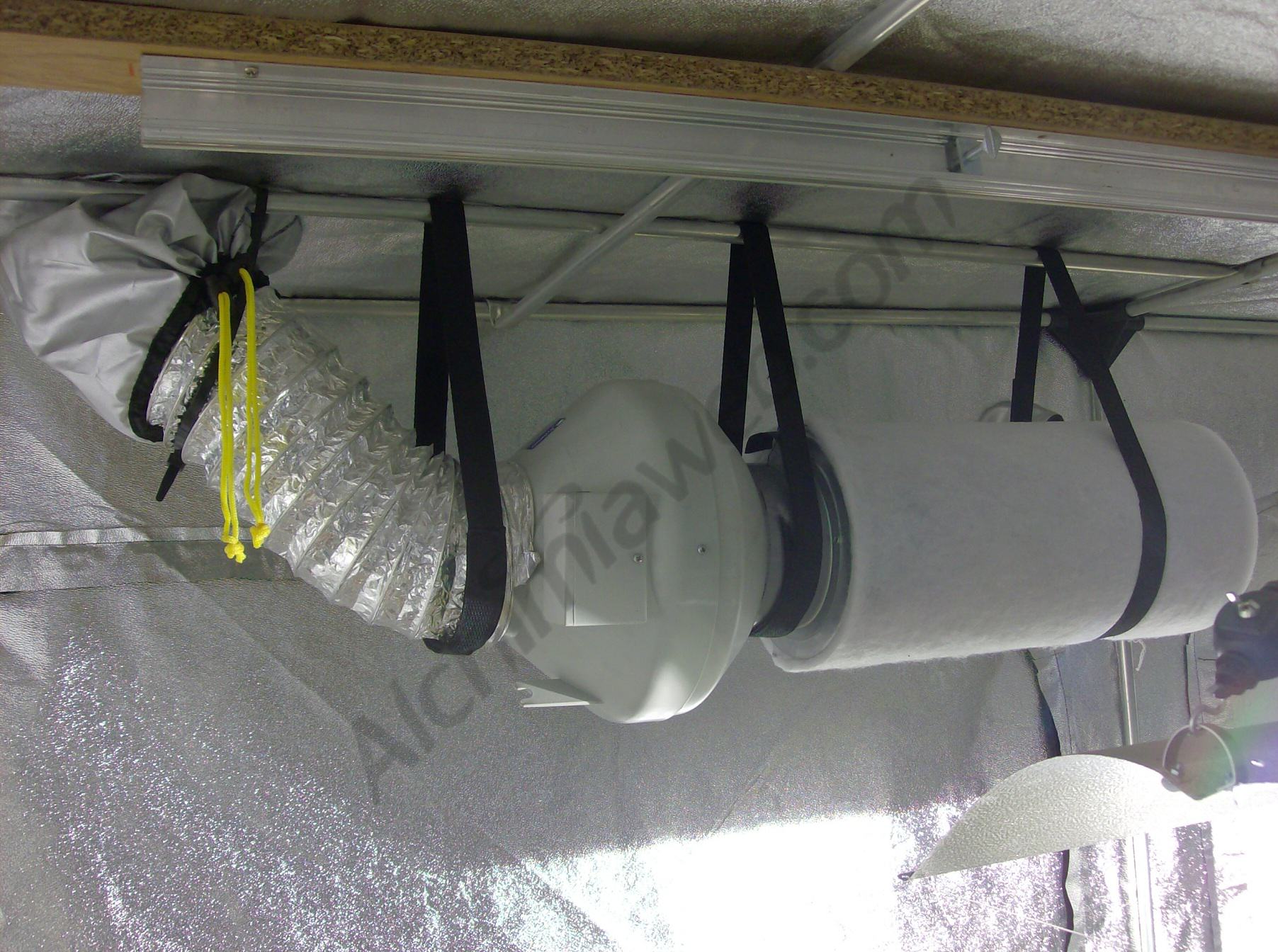
Their capacity must match the airflow power of the extractor fan. We have some examples here:
- RVK A1 100mm 160m3/h extractor fan = 100mm 225m3/h carbon filter
- RVK A1 125mm 225m3/h extractor fan = 125mm 300m3/h carbon filter
- RVK L1 125mm 325m3/h extractor fan = 125mm 300m3/h carbon filter
- Prima Klima 125mm 203/360m3/h extractor fan = 125mm 450m3/h carbon filter
- RVK A1 150mm 425m3/h extractor fan = 150mm 400m3/h carbon filter
- RVK L1 150mm 680m3/h extractor fan = 150mm 650m3/h carbon filter
- RVK A1 200mm 750m3/h extractor fan = 200mm 760m3/h carbon filter
- RVK A1 315mm 1350m3/h extractor fan = 315mm 1200m3/h carbon filter
If, for any reason, you can't or don't want to use these filters, there are a couple of options:
- Place an ozonizer inside the room where you have your growing tent (do not place it directly inside the growing space since ozone is toxic for plants).
- Using anti-odor gel, which has to be replaced often.
We hope we helped you enhance the ventilation system of your growing space with these tips. Have a nice harvest!!
















































